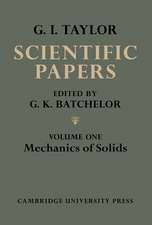Introduction to Dynamics
Autor I. C. Percival, D. Richardsen Limba Engleză Paperback – dec 1982
Preț: 515.47 lei
Preț vechi: 579.18 lei
-11% Nou
Puncte Express: 773
Preț estimativ în valută:
98.63€ • 107.48$ • 83.11£
98.63€ • 107.48$ • 83.11£
Carte tipărită la comandă
Livrare economică 23 aprilie-07 mai
Preluare comenzi: 021 569.72.76
Specificații
ISBN-13: 9780521281492
ISBN-10: 0521281490
Pagini: 240
Ilustrații: 1
Dimensiuni: 150 x 228 x 26 mm
Greutate: 0.37 kg
Editura: Cambridge University Press
Colecția Cambridge University Press
Locul publicării:Cambridge, United Kingdom
ISBN-10: 0521281490
Pagini: 240
Ilustrații: 1
Dimensiuni: 150 x 228 x 26 mm
Greutate: 0.37 kg
Editura: Cambridge University Press
Colecția Cambridge University Press
Locul publicării:Cambridge, United Kingdom
Cuprins
1. First-order autonomous systems; 2. Linear transformations of the plane; 3. Second-order autonomous systems; 4. Conservative Hamiltonian systems of one degree of freedom; 5. Legrangians; 6. Transformation theory; 7. Angle-action variables; 8. Perturbation theory; 9. Adiabatic and rapidly oscillating conditions; 10. Linear systems; 11. Chaotic motion and non-linear maps; Appendixes; Index.
Recenzii
'Percival and Richards give a beautifully clear introduction to dynamics, discussing why scientists should be interested in the stability properties of their equations, and explaining the terminology.' Nature
'The authors of this splendid textbook have made a commendable effort to introduce the geometric and qualitative aspects of dynamics at an undergraduate level … an exciting, well-organised book with many illuminating worked examples. A course based on this book would be a pleasure to teach. It should be greatly appreciated by physicists and engineers, and might help bring applied mathematics forward into the nineteenth century.' The Times Higher Education Supplement
'The authors of this splendid textbook have made a commendable effort to introduce the geometric and qualitative aspects of dynamics at an undergraduate level … an exciting, well-organised book with many illuminating worked examples. A course based on this book would be a pleasure to teach. It should be greatly appreciated by physicists and engineers, and might help bring applied mathematics forward into the nineteenth century.' The Times Higher Education Supplement















